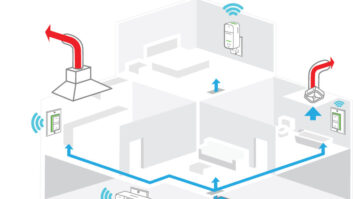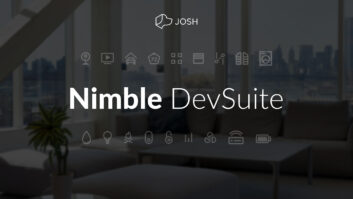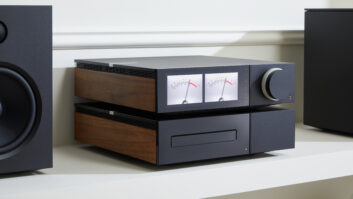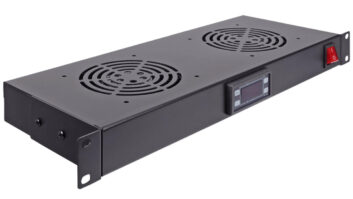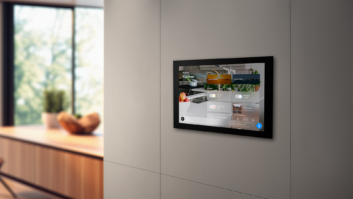As more and more cord-cutting consumers abandon cable or satellite, their DVRs often go out with them. And while streaming services, either free or subscription-based can fill the void for some programming, for free viewing of those “water-cooler programs” that your clients will want to watch or time shift, what’s the answer? With a decent antenna one can certainly watch network and local over-the-air (OTA) stations, but even when time-shift isn’t that important, those who have grown attached to their “pause live TV” button, a new-generation OTA DVR makes more sense than you might think.



Author Michael Heiss wanted to see how over-the-air DVRs from ChannelMaster, SimpleTV, and Tablo measured up to the TiVo electronic program guide system and other features that remain the gold standard for DVRs. For this article, I reviewed four products, and each contains at least two OTA tuners so you can watch and record different programs at the same, internal and/or external hard drive storage (though in most cases that is supplied by you), access to a program guide, time-shift recording and pause/skip/scan functionality. At the top level, TiVo’s Roamio and the ChannelMaster DVR+ most closely resemble the DVRs that your clients are familiar with in that they have HDMI outputs to directly connect the DVR to an AVR, surround processor, or a TV. The SimpleTV and Tablo, on the other hand, have no direct HDMI connection and use an IP connection and external products to bring the content home to the display and audio system.
For TiVo, there’s the new “OTA” model, which is obviously designed for OTA use only, or its current base model Roamio, which also can be used with cable if you add a CableCard (it has to be OTA or cable, but not both.) The OTAonly ChannelMaster DVR+ comes either with 16GB of internal storage (to which more can be added) or with 1TB of internal storage and the ability to add even more with external drives.
We’ll get to the feature and cost considerations later, but the major benefit of these two brands’ products is their ability to connect directly to the local entertainment system via HDMI. With that, the change from one to another is instant, and you can easily use Channel Up/Down buttons or select a channel the old-fashioned way using the numeric keypad on the remotes. Even better, because the units are using direct OTA tuning without the compression applied by cable or satellite delivery, the HD images are the best that you will ever see for a broadcast signal.
Presuming decent signal strength from the antenna, the difference from cable or satellite delivery is often readily apparent even to the untrained eye. In fact, even if there is cable or satellite in the home, I’d recommend one of these two products to feed the best possible signal from a DVR to the upscaler in a 4K set. If you will want to start with the best, this is where you’ll get it.
The second category of devices is a relatively new concept using IP delivery. The two products demoed for this article are from SimpleTV and Tablo. They both have two tuners, with the option of a four-tuner device from Tablo. But, unlike the competition, they require an external hard drive supplied by the user to store the content, a broadband connection and, of course, an antenna.
As these products lack HDMI inputs, a selected channel’s signal or library playback must instead be transcoded and sent to the display and audio system via the cloud through an IP connection. Then, while on the same home network, the streams are accessed via a Roku, watched on a laptop, or viewed via the browser or app on a smartphone or tablet. You can also port them over to a display via a Chromecast or, for iOS products, an AppleTV. This gives the user the flexibility to have multiple viewers access content from the unit’s hard drive on the same network. With the purchase of an optional subscription service, the live or recorded content may then be viewed anywhere in the world. That is a very cool concept that I have used while travelling to keep up with local news or time-shifted network programming without any additional hardware (once the service fee is paid). This is a key attraction for travelers or ex-pats who can put either of these in a relative’s house “back home.”
While this is a clever way to move programing around and view it almost anywhere, the methodology does have some caveats that apply to both brands I tested. First, this is not an instant process. The content selected for OTA viewing has to be made via a grid guide, then sent through the cloud to a device that then has to tune or commence playback, and then send that program back to the receiver. Also, there are no numeric keypad or channel “up/down” buttons due to the grid-centric nature of the app or Roku interface. Channel surfers or those who constantly switch back and forth between channels may get a bit antsy while waiting for the content to start playing from these devices.
Assessing TiVo
As with any product selection, the best approach to OTA DVR buying depends on specific client requirements and budget. Here’s what I found when reviewing these four options.
TiVo offers the most complete solution, in that it has four tuners, a wide range of streaming services including Netflix, Hulu+, Vudu, Pandora, YouTube, and more, along with built-in WiFi. The unique TiVo remote is included, and there are also iOS and Android control apps. If there is a downside to TiVo Roamio OTA it is that while the cost of the product is only $49.95, the consumer must subscribe to the guide service at $14.99 per month, which is about $180 per year. Over a three-year period, the total is almost $590. Unlike with other TiVo models, the “lifetime” subscription option is not currently available for the OTA model. The $399 lifetime subscription discount is available for the regular $199 TiVo Roamio model, so that may be a better value over the long term, especially when considering the ability to switch to cable at a later time.
The TiVo OTA does not include built-in streaming to other rooms in the home, but that can be added for $149 per room with a TiVo Mini, plus the additional cost of a subscription for each room when there is not a “subscription included” promo. Adding out-of-home streaming with a TiVo is also an option, but that requires a TiVo Stream box for $129.
Yes, a TiVo configured to the fullest may cost a bit more than the other options, but it is clearly the benchmark standard for DVRs, particularly for ease of use and channel guide navigation.
Considering the ChannelMaster DVR+
The ChannelMaster DVR+ is a highly capable product for OTA DVR use that doesn’t do everything the TiVo does, but it is incredibly capable in those functions that it does offer. My choice of the two available models would be the 1TB model at $399, and unless you add the WiFi adapter for another $39, that is all you need to buy. It has only two tuners compared with the TiVo’s four, but the internal storage time capability is higher and more can be added via external USB drives. (TiVo lets you add external drives, as well.) There is no app control, but the codes from its IR remote may be easily added into any control system with an IR input. Best of all, there is no subscription fee for the 14-day electronic program guide (EPG.)
This incredibly thin unit delivers the impressive image quality that one would expect from a direct connection, and the guide is straightforward and easy to use. Available streaming services are movie-centric, with Netflix, M-Go, Vudu and Amazon Prime, along with Pandora for music streaming. The tuner in my test unit (supplied by ChannelMaster) ended up in a tie with the Tablo for the largest number of channels available from the same indoor antenna split to all tested products.
Given its low cost, excellent image quality, ease of use, and slim profile, the DVR+ might well find a home even in installations where cable or satellite DVRs are still present. When the number of shows being recorded by the latter is overrun, the DVR+ is a nice backup, and like the TiVo, its direct OTA connection makes the best input to a 4K display’s scaler. In addition, in a home where there is a requirement to time-shift the “secondary channels” present in many markets for ethnic, foreign language, or religious programming that are frequently not carried on cable or satellite, the DVR+ becomes a must-have supplement. In budget-sensitive situations, the basic 16GB model at $249 with the addition of 1TB external drive for under $100 delivers all the added capacity and “trick play” functions of the more expensive model for $50 less.
As might be expected at its low cost, there is no multi-room/in-home or out-of-home streaming with the DVR+. For that, an external product such as a Slingbox is needed, but in that case a TiVo with its options or one of the dedicated streamers may be more appropriate. However, unless the TiVo’s four tuners is a requirement, the DVR+ is an exceptional value proposition for OTA time shifting.
Evaluating SimpleTV and Tablo
On the surface, SimpleTV and Tablo appear to be reasonably similar. Both of the compact products are literally “black boxes” that require a compatible hard drive before you can use them, with 500GB or more capacity recommended. Next, you need a means to play back what they record and store, meaning that a phone or tablet and a Chromecast, AppleTV, or a Roku is required. Depending on which of these is selected and the drive capacity, you’ll have to add at least $100 or so for a low-end solution, and twice that at the higher end.
Each also requires a subscription to its respective guide service for maximum flexibility. While both provide basic short-term guide service without the subscription, go for the service as it unlocks extended guide data and out-of-home viewing capability. Monthly or yearly subscriptions are available, but the $149 “lifetime” subscription is the way to go. Unlike TiVo’s subscriptions where the “lifetime” is that of the product, with SimpleTV or Tablo it is your lifetime that is counted, and you can add multiple units (unlimited with SimpleTV and up to 10 Tablos) for the same $149.

Given its low cost, excellent image quality, ease of use, and slim profile, the DVR+ might well find a home even in installations where cable or satellite DVRs are still present. Although they look and act reasonably the same, there are more than a few differences between the products.
SimpleTV was first to market, and its $199 two-tuner unit benefits from a bit more development time than the more recent Tablo. For example, SimpleTV has apps for both iPhone and iPad, while Tablo is currently iPad only (an iPhone app is promised for early 2015.) Those with Windows phones are limited to SimpleTV, while both offer apps for Android, Amazon FireTV, and web interfaces for use on a PC browser.
For those who haven’t completely cut the cord, SimpleTV’s tuners are also Clear-QAM compatible, so that if the client’s cable company hasn’t stopped un-encrypted basic channels, SimpleTV can go OTA or cable. (Note that as with the standard $199 TiVo Roamio model, it is Clear-QAM or OTA for all tuners, but not both; you can’t split this.) Tablo is OTA only, though it did preview a concept model with CableCard capability at CEDIA EXPO that has no current introduction plans.
Remembering that both require some external product to operate, it is worth reminding that these are not “press a button to instantly watch a channel” products. Further, unless you can integrate their native apps into a control system, you are locked into standalone control as neither uses a standard remote.
When used with a Roku, the user interfaces of both products are quite similar. It takes a bit of acclimation on the user’s part, however, as it is not the same as the straightforward way that TiVo or the DVR+ show live TV content or the programs recorded and in the library. Anyone used to the way Roku works will quickly get used to it.
In my opinion, a key feature is its ability to view live (SimpleTV only) or recorded OTA programs anywhere your tablet or phone has decent download speed is. Here, performance differences begin to appear between the two products. Given the same 10Mbps speed at a local Starbucks, the SimpleTV’s guide took close to minute to load each time I called it up, while the Tablo was ready to view in less than 10 seconds. Video quality was good on both, but on the Retina display of my iPad the Tablo’s video appeared to be slightly better, and it offered the ability to tailor the stream’s bandwidth capability to match what was available. That said, I’ve used the SimpleTV on airport and hotel WiFi in places as far away as a remote city in China with good results. There is nothing like watching the local news and sports using this type of product rather than the endless repeat cycle of CNN International or BBC World programming when overseas.
Other differences that tend to point my evaluation toward the Tablo are the availability of a four-tuner model for $299 as well as the two-tuner model at $219 that Tablo provided for my test. Other feature differences are the availability of internal WiFi for the broadband connection on the Tablo as well as its fan-free design. The SimpleTV not only has a fan, and though it is not on at all times, when it is at full speed it does tend to get noisy. SimpleTV, on the other hand, has the capability to off-load recorded content for storage and viewing on other devices without a direct network connection.
At the end of the day we‘ve come a long way since VCRs first gave consumers the ability to timeshift television programs. For many users the device provided by their program supplier will more than suffice, as will the TiVo Roamio models, particularly the six-tuner “Plus” and “Pro” models with one or three thousand hour capacity and built-in TiVo Stream for out-of-house viewing. On the other hand, as your customer base looks to cut the cord in some, if not all of the rooms in their home or simply needs a capable alternative for OTA DVR and out-of-home streaming, all of these products are something you should examine and consider a valuable part of the palette of device options you offer.
Michael Heiss is a CEDIA Fellow and contributing editor to Residential Systems.
